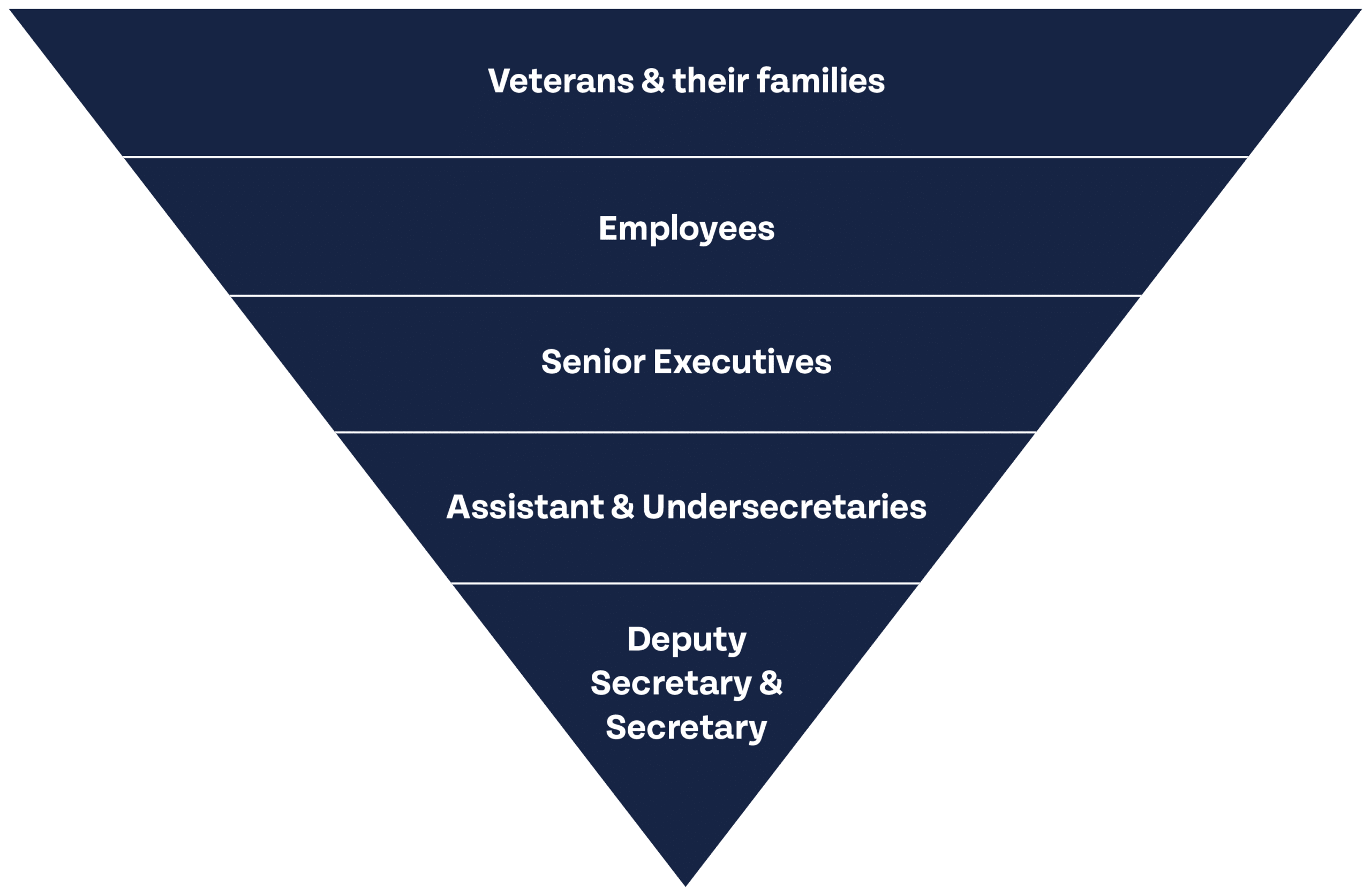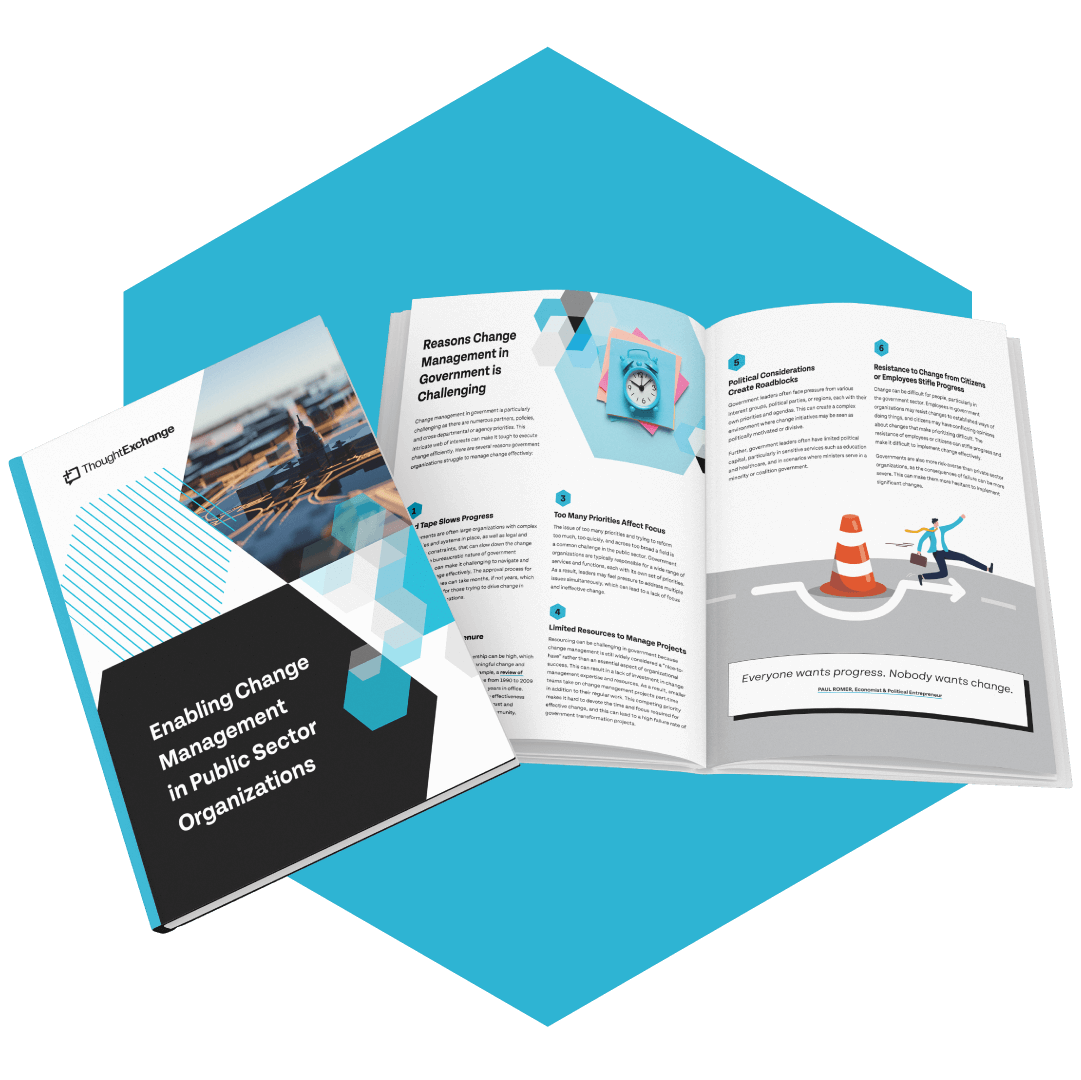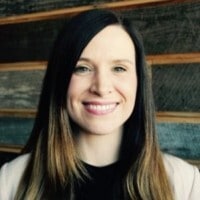







5 Best Practices to Drive Change in Government
In countries around the world, citizens are increasingly dissatisfied with government services. When compared to modern, app-driven services delivered in the private sector (e.g., Amazon, Uber, Netflix, etc.), government services are, at best, underwhelming and, at worst, downright frustrating.
That’s not to say governments aren’t trying. Governments know they must transform to meet the needs of a new generation and face current and future challenges head-on. But change is never easy.
Table of Contents
Establish a strategic change office or appoint a transformation leader
Establishing a strategic change office (SCO) puts change in its proper strategic place in an organization and places the change management leader on an even level with the head of the agency, department, or public sector organization.
The SCO can help drive transformative change across the organization by ensuring that the right resources, methods, and skills are deployed to deliver success. According to a study by McKinsey and Co., a committed leadership team was one of the top factors that tripled the success rate of transformation projects in government.
Engage Communities in a Fair Way
Resistance to change in government is natural, so it is important to anticipate and address it. This can be done through communication, engaging with communities in an equitable way, addressing concerns, and providing support to help people adapt to the changes.
Sydney’s community engagement strategy on climate change, for example, involved the creation of a centralized Community Consultation Group that ensures engagement with people who don’t traditionally take part in participatory processes. This certifies that all voices are equitably represented and the city can deliver projects and policies that have fairer impacts, especially on low-income and traditionally marginalized groups. This strategy creates broad buy-in for ambitious sustainability targets and policies and reduces the likelihood of polarized debates.
There are several change management tools that can help foster this type of engagement with citizens, including engagement and survey platforms (like survey tools that tell the whole story without compromising on equitable engagement). We cover these tools in detail here.
Focus on Organizational Performance and Health
- Performance refers to what a government agency does to deliver the specific results with which it is tasked.
- Organizational health refers to how an agency’s staff works together in pursuit of a common goal, how closely the organization aligns around a clear strategy, how the organization executes against that strategy, and how consistently the organization renews itself over time.
McKinsey described how this approach helped the US Department of Veterans Affairs drive change and rebuild trust following the veteran-access crisis pre-2015.
The VA’s culture change required a mindset shift from an internal focus on doing what was best for the VA, to a citizen-focused mindset of doing what was best for veterans.
Leadership reinforced this culture change by communicating it regularly at forums, both verbally and visually, with an emphasis on flipping the hierarchic pyramid so that veterans and frontline employees were at the top, and the secretary and deputies were at the bottom.

Involve Employees in the Change Process
Engaging employees in the change process can help to build ownership and commitment to the new way of doing things. However, few governments communicate or engage effectively enough to win the hearts and minds required to drive change. Nearly 90 percent of the participants in a recent survey said that the transformation would have been more successful if there had been more engagement with frontline employees.
The bottom line is that any change or transformation needs well-planned, in-depth, and genuine two-way communication with all the groups affected by change—especially the employees of the organization undergoing the transformation. Look at the change management tools we recommend for some ways to help with this two-way communication.









Foster Agility to Make Future Change Easy
An agile government is well-equipped to deal with constant change. According to Gallup, the concept of agility can be defined as, “employees' capacity to gather and disseminate information about changes in their environment, and respond to that information quickly and expediently."
During the pandemic, we saw wonderful examples of the public sector adopting agile processes. Schools—teachers and IT teams, in particular—demonstrated incredible agility as they adapted to using technology to teach children remotely.
Download our Enabling Change Management in Public Sector Organizations in Government guide for a detailed exploration of the challenges, best practices, and tools suited to address change management in the public sector